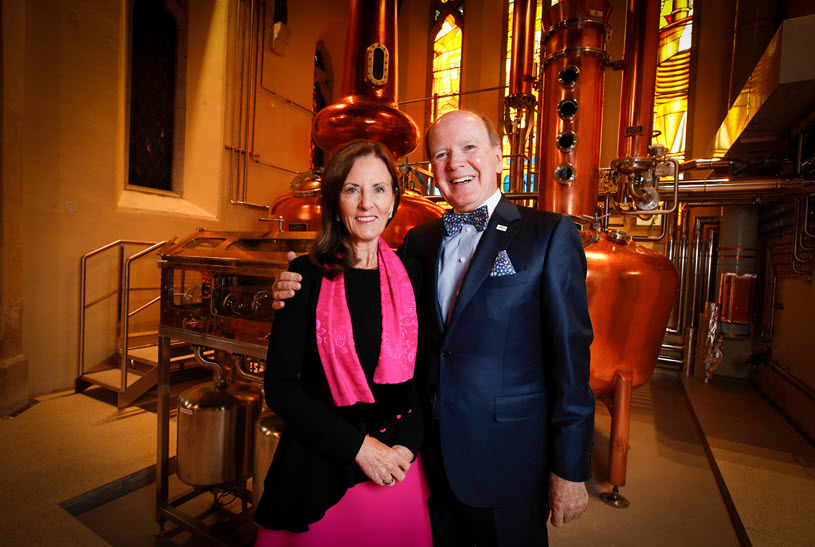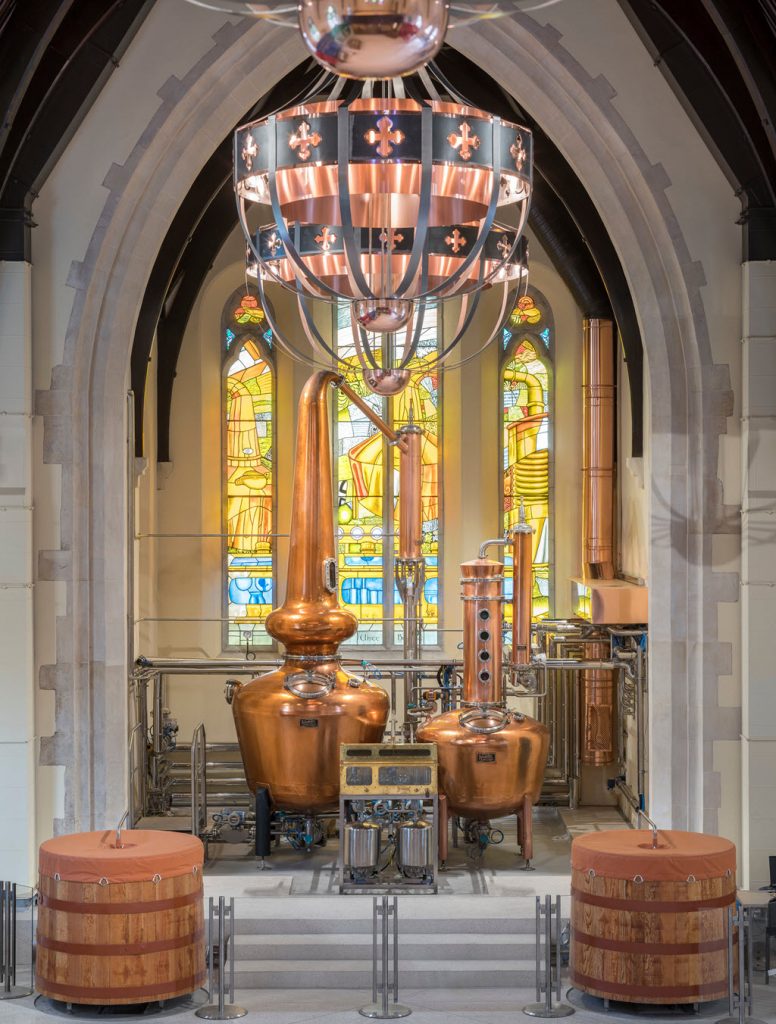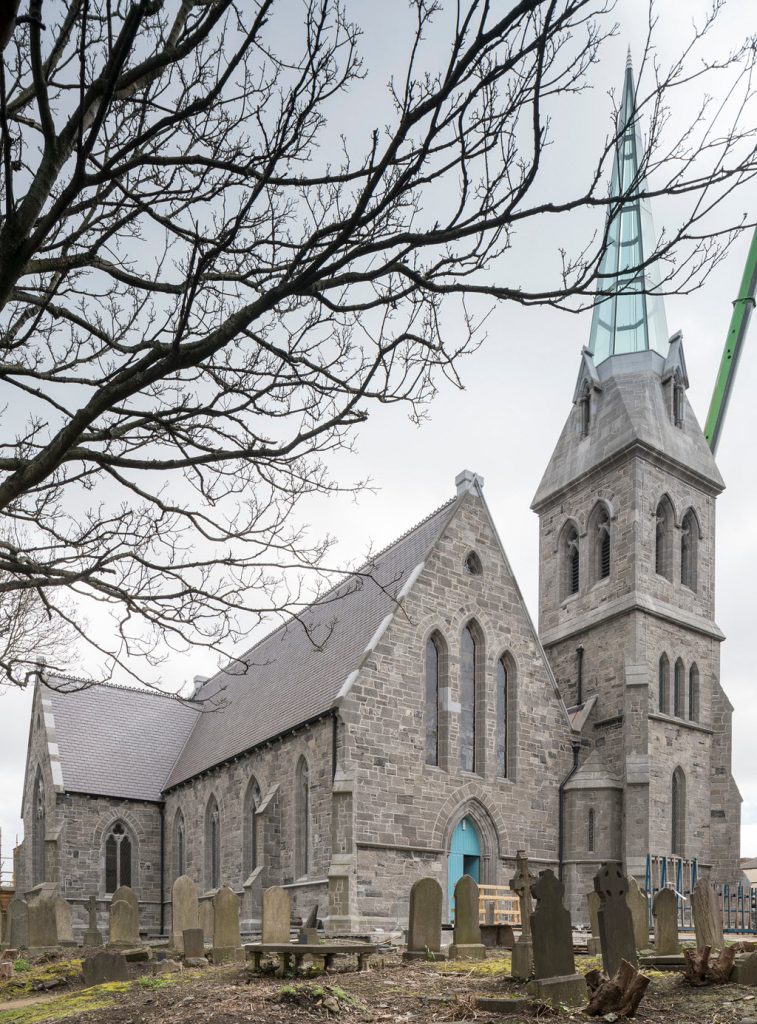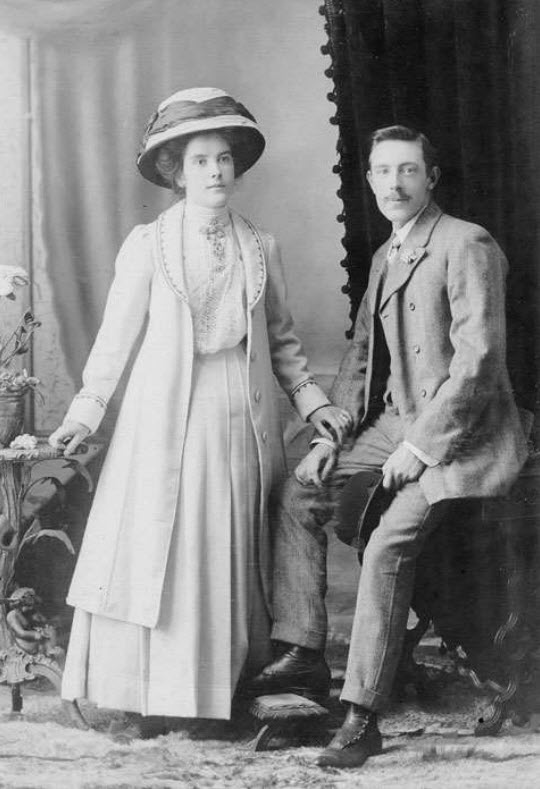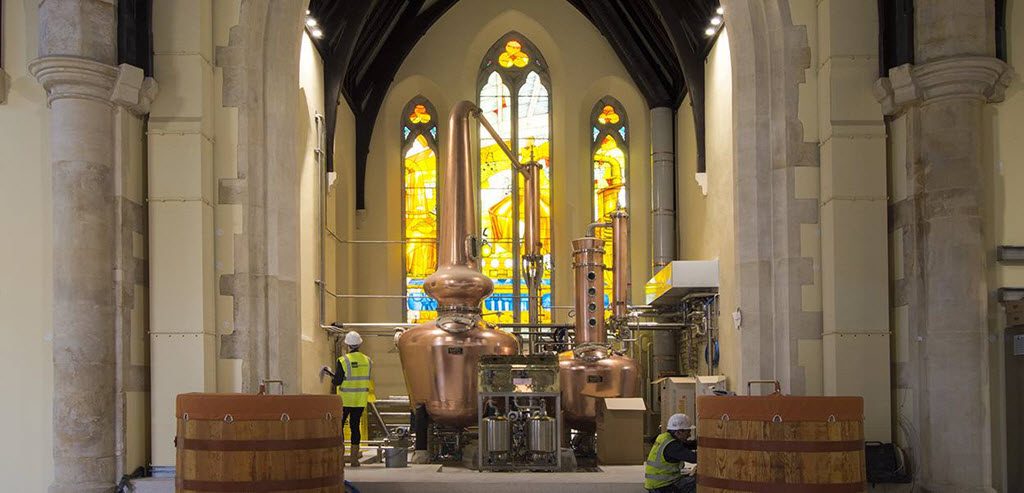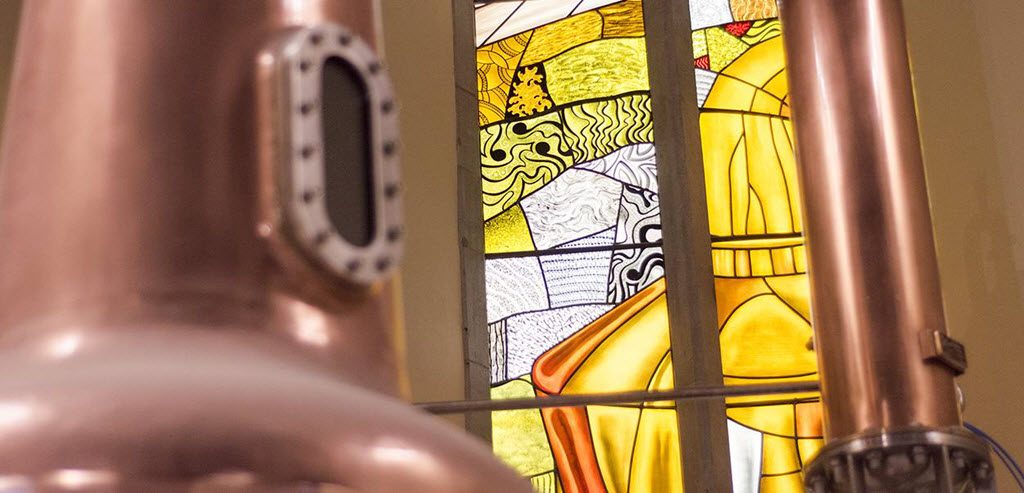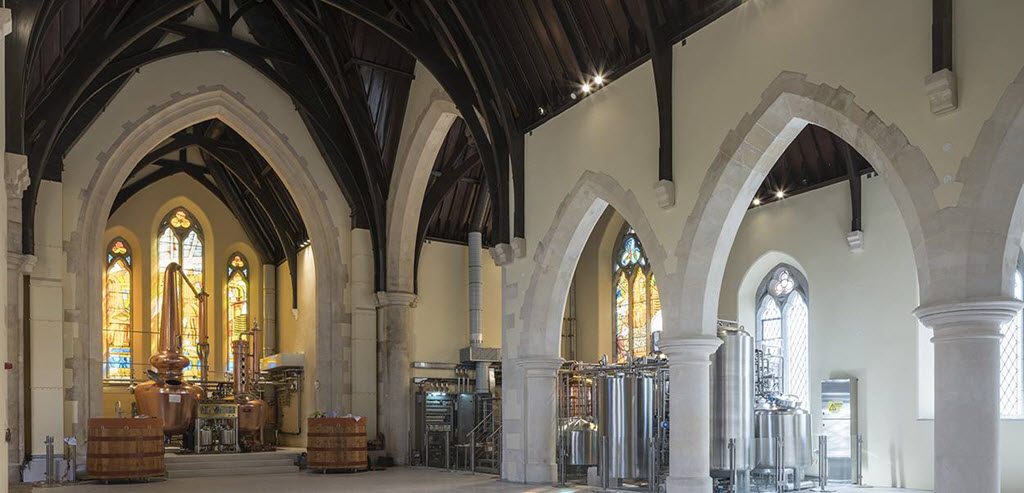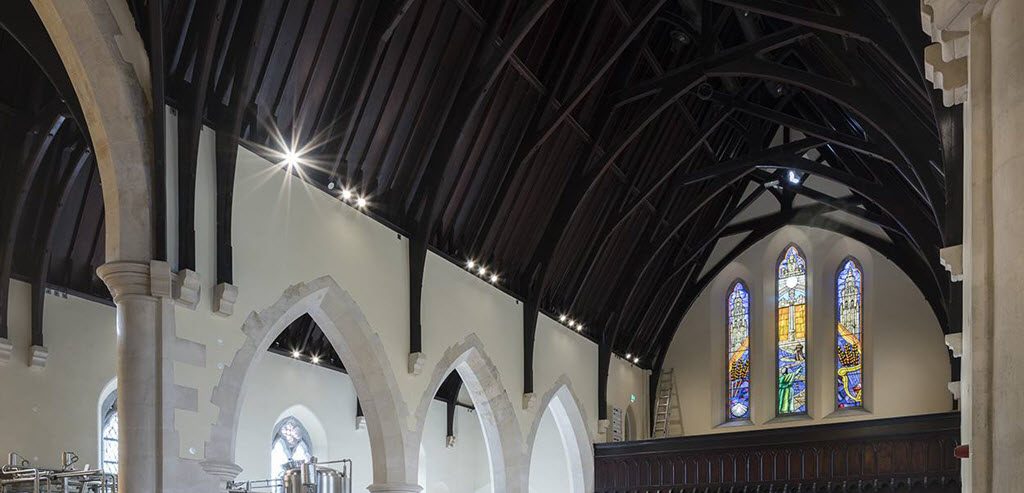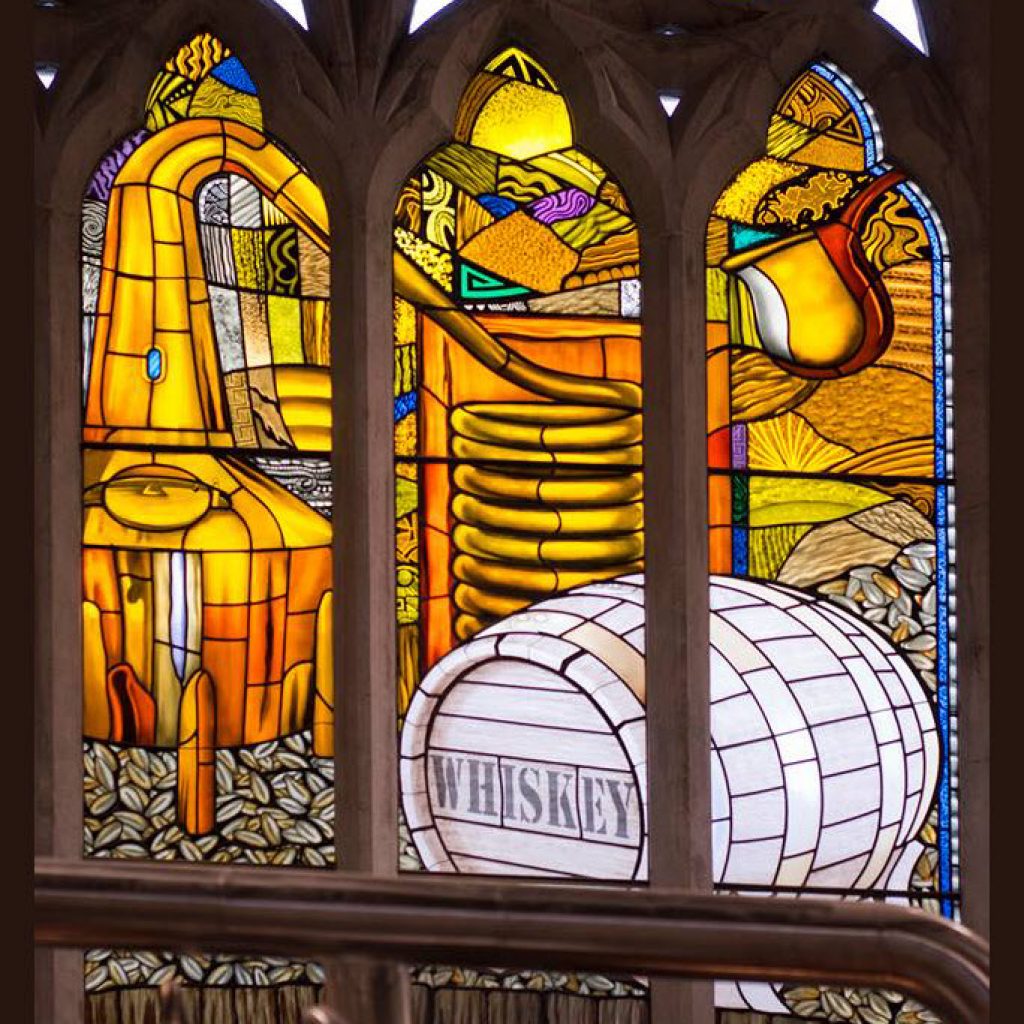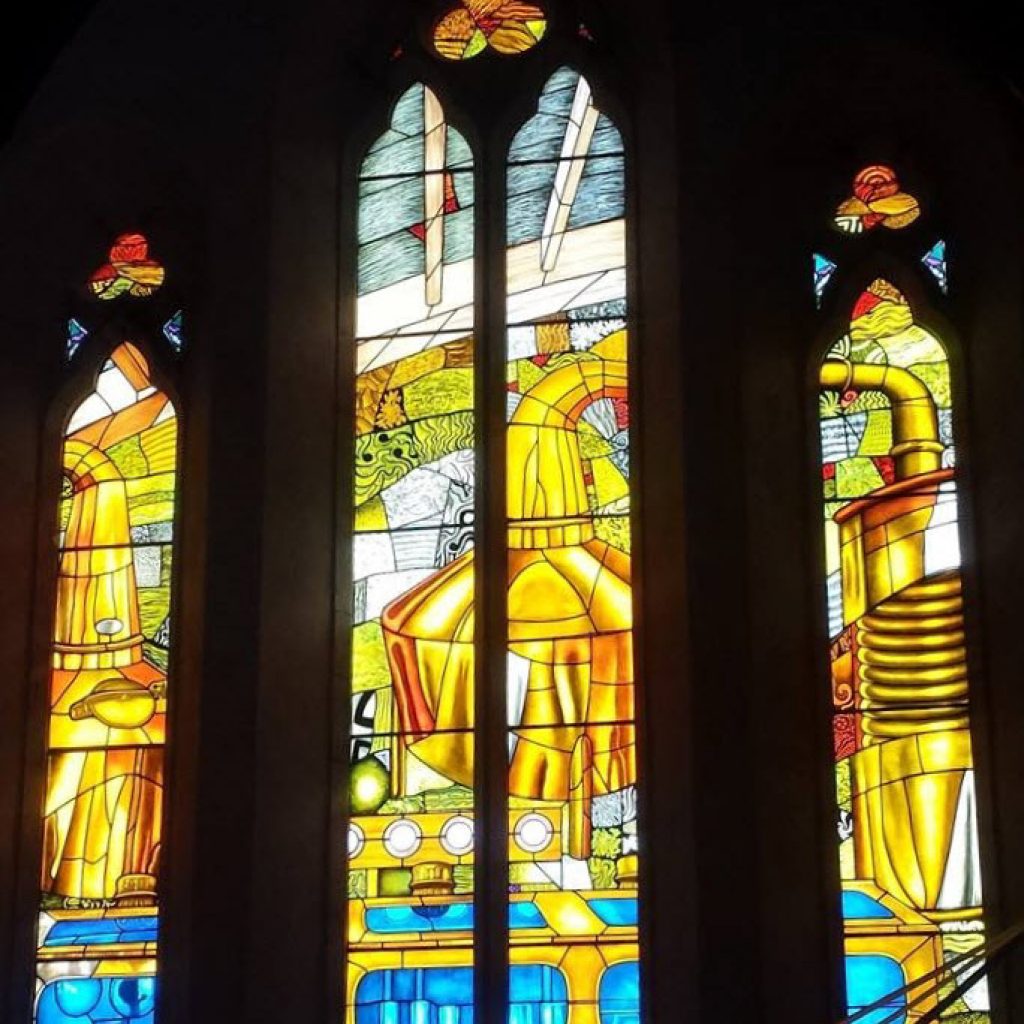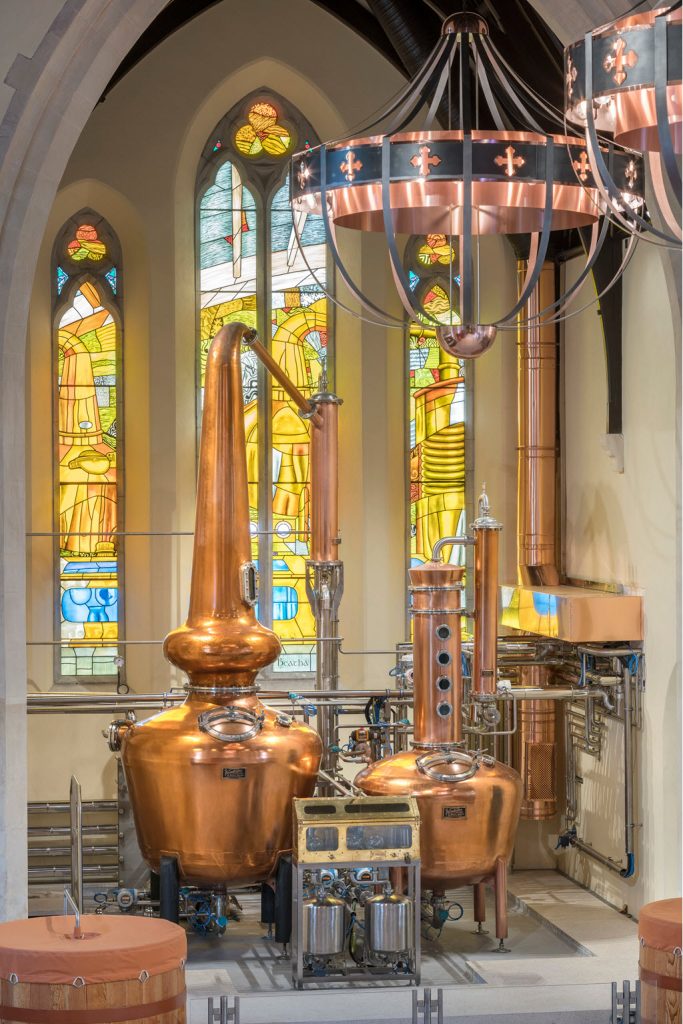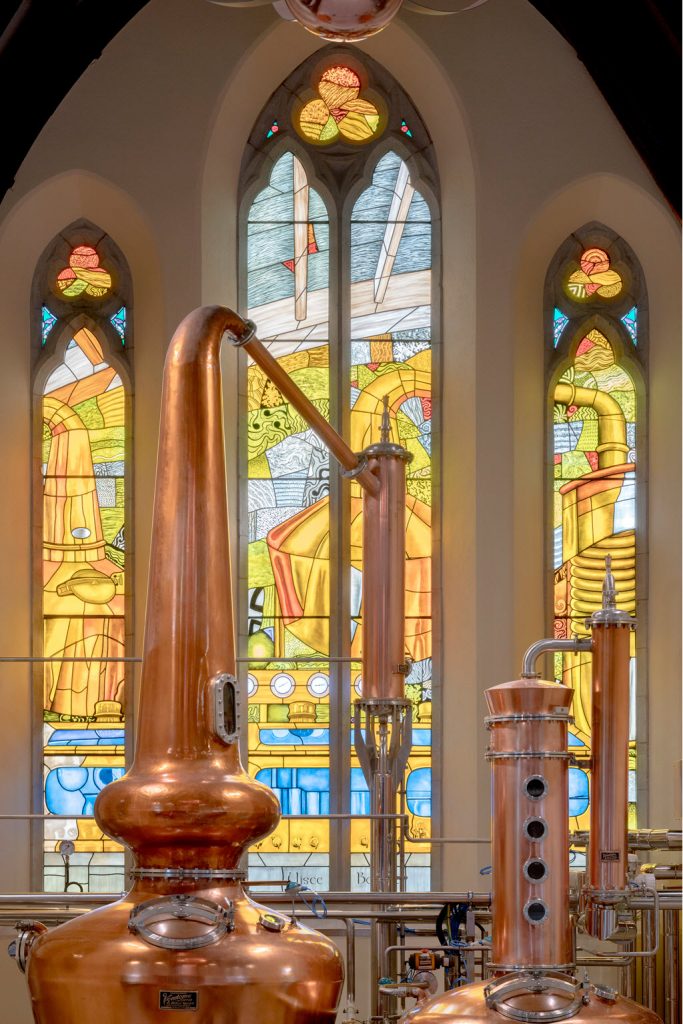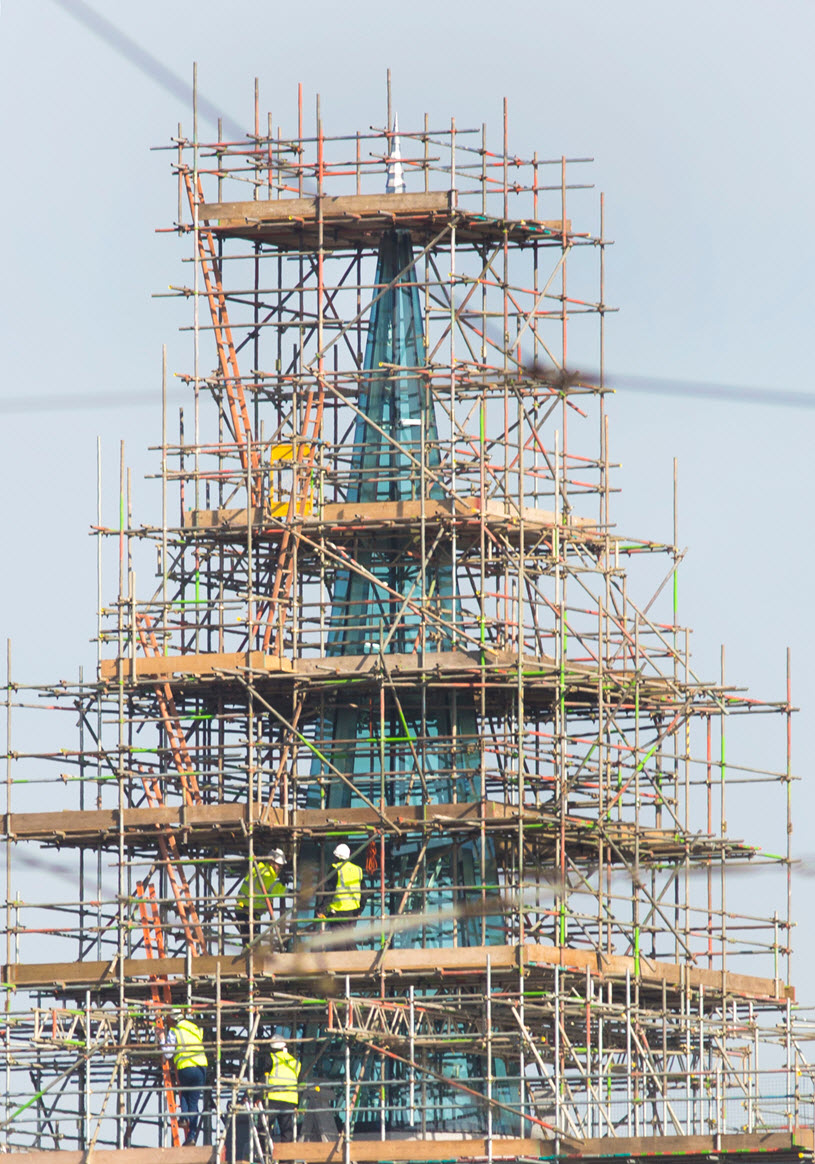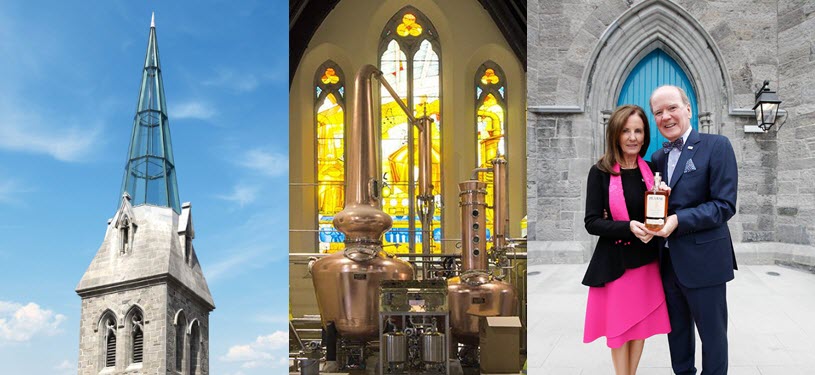
With the boom in craft spirits, there’s about one distillery opening each day in the U.S. There are many things a new distillery needs to succeed. The most basic list includes things like great people, great spirits, a great location and a great story. (And of course a great sum of cash. A good rule is to figure out how much you’ll need and double it.)
A Family History of Brewing and Distilling
Alltech Founder and President Dr. Pearse Lyons acquired the Lexington Brewing Company in 1999. The roots of the brewery date back 200 years to 1794. Dr. Lyons was not a newbie getting into the business; he has a personal and family background in both brewing and distilling that can be traced back to his days growing up in Ireland. His family lineage has five generations of barrel makers and he was the first Irishman to earn a formal degree from the British School of Malting and Brewing. He interned in college at both Guinness and Harp Lager breweries and later worked as a biochemist for Irish Distillers, making Jameson Whiskey. You could say he’s got BrewStilling in his veins.
Connecting the Distillery Dots – Thrice
In 2011, Lyons broke ground on distillery No. 1 with Town Branch Distillery and by 2012 the craft spirits distillery was mashing, fermenting, distilling, barreling and welcoming visitors as a member of the world famous Kentucky Bourbon Trail. In 2015, Lyons announced he was building distillery No. 2, Dueling Barrels Brewing and Distilling 142 miles east in Pikeville, Ky. Then in early 2016 he announced distillery No. 3, Pearse Lyons Distillery. This time he moved further east and across an entire ocean to his homeland in Dublin, Ireland some 3,700 miles from Town Branch.
Welcome to the altar of whiskey…
Fun Fact
The Town Branch Distillery copper pot stills in Lexington are made in Scotland.
The Pearse Lyons Distillery copper pot stills in Dublin are made in Louisville, KY by Vendome Copper & Brass Works.
Pearse Lyons Distillery to Open 300 Yards from Guinness Brewery
Real estate agents preach it all the time, location, location, location. Well, the new Pearse Lyons Distillery has the location. The new distillery sits about 300 yards away from one of the most visited tourist destinations in Dublin and Europe – the Guinness Brewery. The world famous brewery gets 1.6 million visitors a year and the average visitor spends about $40, generating some $64 million for Guinness. How many of those visitors will make the easy trek down the street to visit the distillery in a resurrected church with a spire that lights up the Dublin skyline? Lots!
Oh and down the street from there you’ll find the Old Jameson Irish Whiskey Distillery.
A Church That Once Poured Wine Will Soon Pour Irish Whiskey
Stay Informed: Sign up here for the Distillery Trail free email newsletter and be the first to get all the latest news, trends, job listings and events in your inbox.
If you are looking for more history you’ll find it here. The building that houses the new distillery as you can see from the photos was once a church and graveyard. Not just any church, the St. James church was originally built between 1189 and 1192 as part of St. Thomas’s Abbey, which was founded by King Henry II as his penance for the murder of Thomas Becket, who was then the Archbishop of Canterbury.
In the mid-1500s, the first church collapsed and remained in disrepair for 100 years. Around 1650, another church was built, but by 1859, the congregation had outgrown the space, and permission was sought to take it down and rebuild a bigger structure. The old steeple on the church was removed around 1948 but those renovations were never completed. The church has sat without a steeple for nearly 70 years. (Take a look at the photo below of the spire while it was under construction to get a feel for it’s true size.)
Pearse Lyons’ Grandfather is Buried at St. James Church
The graveyard is now the permanent resting place for some 100,000 people with the earliest recorded burial dating back to 1495. A walk through the church graveyard reveals the many people buried there as grocers, tanners, skinners, coopers, distillers and brewers. In 1948, John Hubert Lyons, Pearse Lyons’ grandfather was one of the last people buried in the graveyard.
“Pearse’s family lived, worked and did everything in the area,” said Deirdre, director of corporate image and design at Pearse Lyons Distillery. “Five generations on his mother’s side, the Dunnes, traded as coopers — it was in the DNA, if you like.”
Bringing a Church Back to Life
“Bringing the old church back to life has been a monumental job,” said Deirdre. “Creating Pearse Lyons Distillery at St. James has required a lot of time and investment. We started this project in March 2014, but it changed a lot from the time we purchased the building.
“It was a protected building, and then it became a national monument,” she continued. “This added many layers on the conservation side. Restoration costs, additional facilities, distillery equipment, artworks and our new glass spire, which we have named The Liberties Lantern, has pushed the cost of the entire project to more than €20 million. It has been an arduous process, respecting the historic site while trying to build a working distillery and tourist attraction.”
A Boutique Distillery and Visitor Experience
“The nature of the layout of Pearse Lyons Distillery means we will always be a boutique visitor attraction,” said Deirdre. “The tour guides will be called storytellers because the difference between our distillery and others is the fabulous history of the location and of the church itself. It all becomes a story — a story of whiskey, a story of The Liberties and the history of the graveyard.”
Click any image to enlarge.
Newly commissioned stained glass windows further enhance the storytelling at St. James. On the west side, the window honors the Camino de Santiago. To the north, the stained glass, housed in a frame in front of the original window, depicts Robert Dunne, Pearse’s uncle, who was one of the last coopers who worked in Dublin. The window to the east tells the story of distillation, while the south window explains the brewing process.
“We are thrilled to add another chapter to my rich family history of brewing and distilling,” said Pearse, founder of Pearse Lyons Distillery. “Our distillery and visitor centre will showcase the history of distilling in Dublin’s Liberties. Visitors will have the opportunity to witness, smell, taste and learn all about the process of distilling Pearse Irish Whiskey.”
Can the Kentucky Bourbon Translate into a Dublin Whiskey Trail?
“We wanted to do something in Dublin based on our knowledge of Kentucky, where we already have a distillery,” said Deirdre. “Becoming part of the Kentucky Bourbon Trail®, I was able to witness how a cluster of distilleries could work together to attract more visitors. We would love to be part of a whiskey trail in Dublin.
“At one time in the history of The Liberties, this area was known as the ‘Golden Triangle’ due to its many distilleries,” she continued. There is so much happening right now with new distilleries — we could return to those times and the potential for job creation is huge.”
The Liberties Lantern Atop the Distillery
Like a beacon in the night, the Pearse Lyons Distillery at St. James can be identified from various points in Dublin city by its striking spire, The Liberties Lantern. Over the next few years, the distillery expects to attract up to 75,000 visitors annually. The team at Pearse Lyons Distillery will be led by Tracey Flinter, general manager, and Gearoid Cahill, head distiller.
Related Stories
Town Branch Distillery Parent to Open 3rd Distillery – This time in Ireland
Dueling Barrels Brewing and Distilling Breaks Ground in Kentucky
Learn more about Pearse Lyons Distillery.
Learn more about Dueling Barrels Brewing and Distilling.
Learn more about Town Branch Distillery.
View all Ireland Distilleries.
Please help to support Distillery Trail. Sign up for our Newsletter, like us on Facebook and follow us on Twitter.
Resources – Interior photos courtesy of TOTP Architects.


